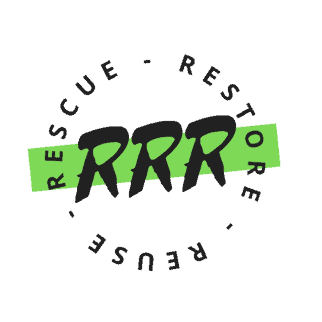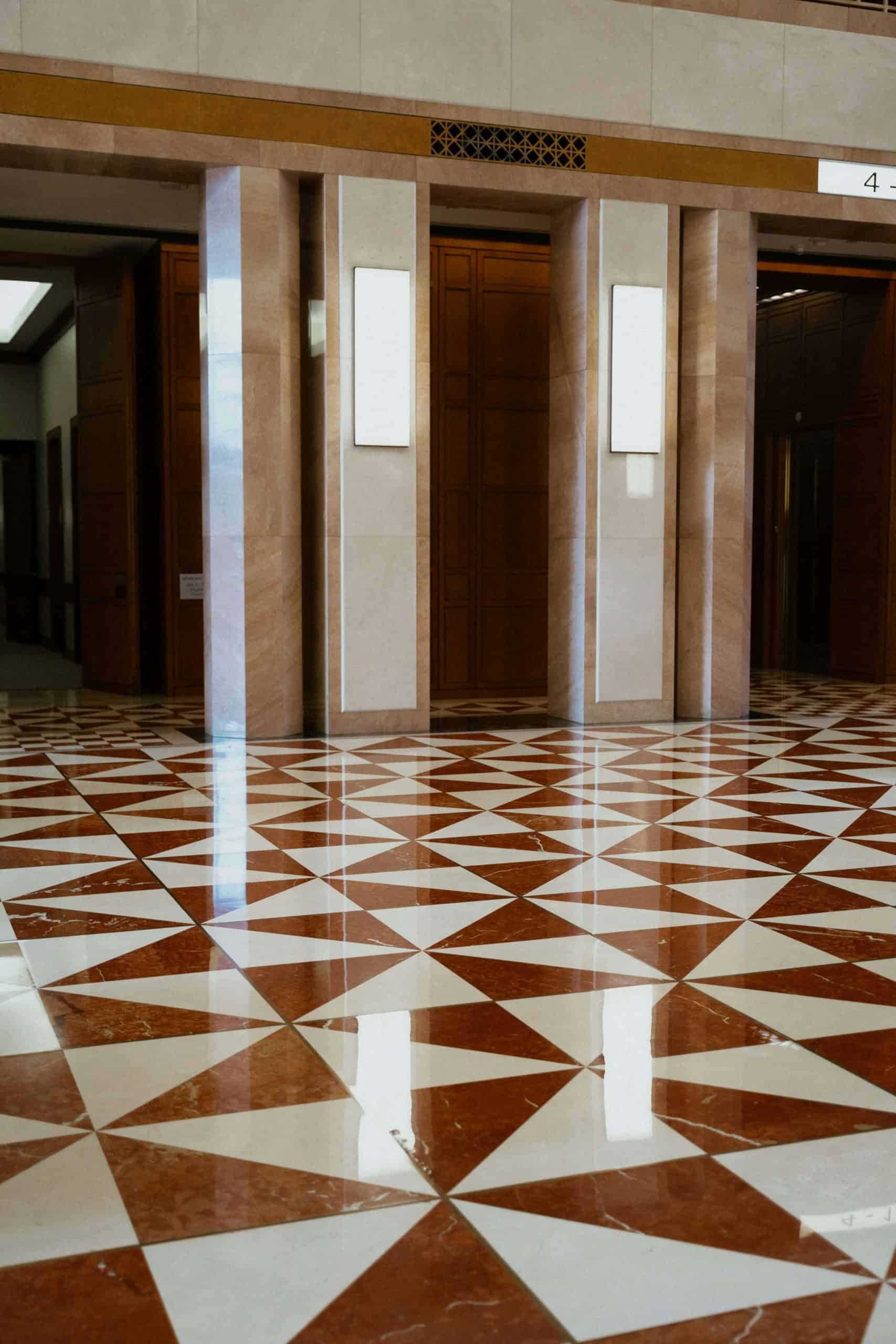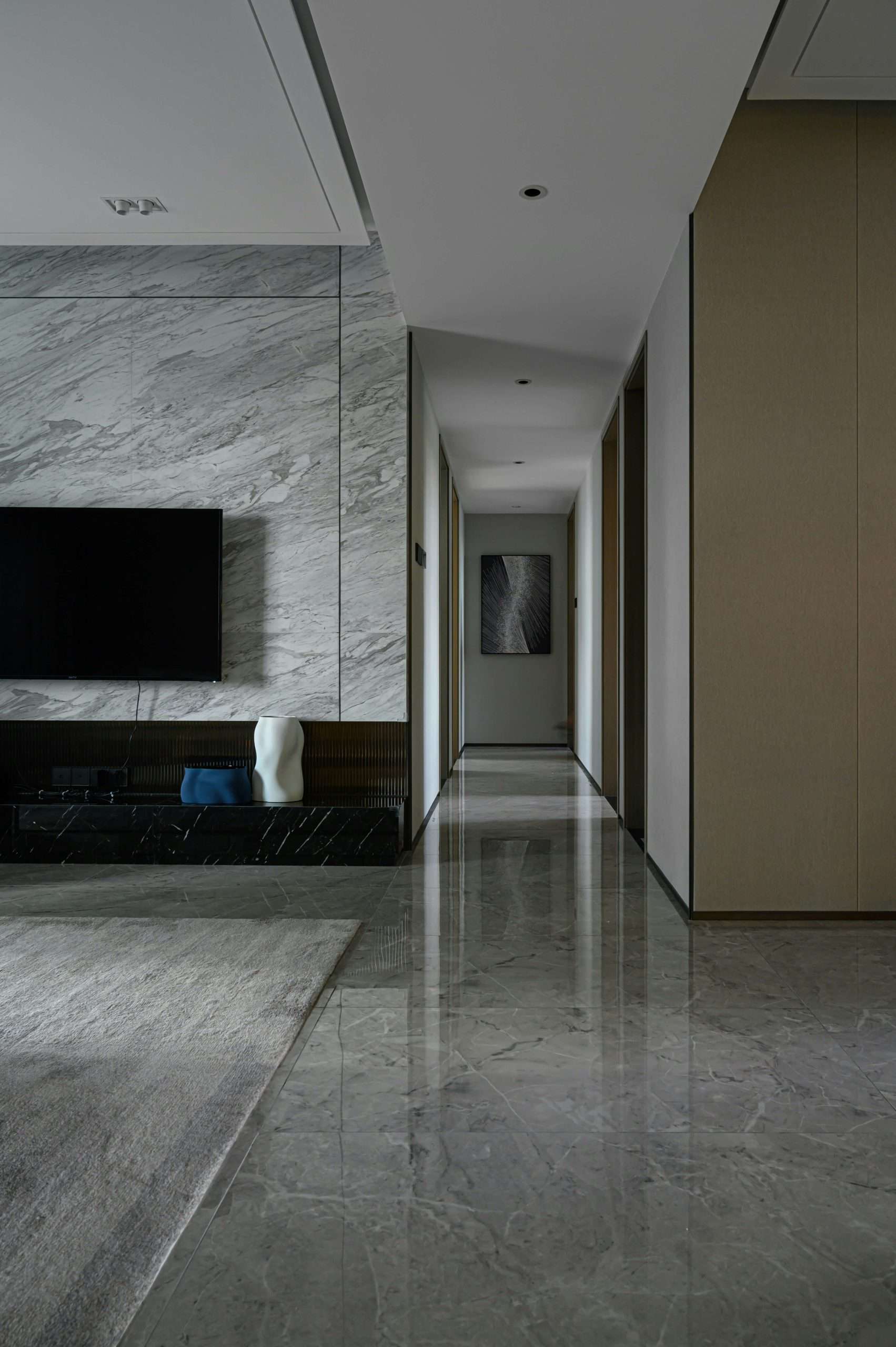Crystallization (also known as re-crystallization or vitrification) is a method of creating a gloss on calcium bearing stone floors such as marble, limestone, and travertine. Crystallization has been in use since the 1960’s with varying levels of success and is still a controversial topic among stone care professionals.
Many claim successful use with no damage to stone while others claim damage to the stone occurs either immediately or over a period of years. Below is a discussion of what crystallization is and how it differs in process from that of using oxalic acid to chemically polish stone floors.
What is marble:
For our purpose here we will simplify our language and use the term marble to refer to all calcium bearing stones and cementitious terrazzo flooring materials. The chemical content of these stones is primarily calcium carbonate (CaCO3), the same compound that makes up seashells, pearls, eggshells, and common household antacid tablets.
What is crystallization:
Crystallization is a process in which a steel wool pad is used in combination with a weighted floor machine and acid solution to bring a polish to stone floors. The most common ingredients of crystallization chemicals are acid, magnesium fluorosilicate, aluminum fluorosilicate, zinc fluorosilicate, and water. Some crystallization products may also contain waxes. The chemical reaction illustrated below shows the process taking place during crystallization. Note that magnesium fluorosilicate (MgSiF6) is used in this example but most chemistries will contain a mixture of fluorosilicates. The basic reaction principals are the same no matter which fluorosilicate chemistry is used.
MgSiF6 + 2HCl + CaCO3 →CaSiF6 + MgCl2 + CO2 + H2O
Or
3CaCO3 + MgSiF6 →MgSiCO3 + 3CaF2 + CO2 + H2O
In this reaction the magnesium salts are primarily left on the surface of the stone and removed during the next cleaning of the surface, and the calcium fluorosilicate (CaSiF6) is bonded to the underlying stone and is now the layer we walk on. The surface of the stone has now been chemically altered and there is no way to reverse the process. Note that this new surface of the stone is not a coating but is now part of the stone itself.
The only way to remove a crystallized layer is through mechanical action such as diamond honing. Chemical strippers commonly used to remove acrylics will not remove crystallization. The resulting layer of calcium fluorosilicate formed on the surface of the stone is harder, more glossy, and more stain resistant than the original stone surface. This is the principal behind crystallization.
How does crystallization differ from what is done in the factory or with a polishing compound containing oxalic acid:
Most marble has been polished in the factories using various grades of abrasives followed by a final step using an abrasive in combination with oxalic acid (H2C2O4). In an effort to replicate this factory finish most marble polishes contain an abrasive to remove
fine scratches and oxalic acid to replicate the factory process. Unlike crystallization, steel wool is not required when using an oxalic acid polish. Most often, polishes are used with a red or natural floor pad under a 175rpm floor machine. Floors with deeper scratches or other damage, typically must be diamond honed prior to using marble polishing products. During marble polishing, the reaction taking place is shown below.
H2C2O4 + 2CaCO3 →CaC2O4 + CO2 + H2O
Again the resulting surface is more glossy than the original stone surface. The difference is that the reaction taking place using oxalic acid does not chemically alter the surface of the stone. The calcium oxalate (CaC2O4) formed in the reaction is washed away with the slurry from the process leaving behind a smoothed and polished stone surface that has not been chemically altered.
Note that the above does not mean that oxalic acid will not etch stone surfaces. Oxalic acid (and any acid) dropped on a marble surface will etch. Factory polishing and marble restoration are performed under controlled circumstances to reach desired results. How does this affect the use of Scotchgard™ Stone Floor Protector on a floor? Due to the chemical change to the flooring surface crystallized layers must be removed prior to applying Scotchgard™ Stone Floor Protector. Trizact™ Diamond HX Discs are sufficient to remove the crystallized layer and prepare the floor for application.
Floors that have been polished using an oxalic acid product have not been chemically altered and therefore do not need to have a layer removed prior to application. However, for best results it is still recommended that Trizact™ Diamond HX Discs be used to remove all scratching, bumpiness, and other blemishes on the flooring surface.
Notice to Reader
The technical information, recommendations and other statements contained in this document are based upon tests or experience
that 3M believes are reliable, but the accuracy or completeness of such information is not guaranteed. Many factors beyond 3M’s
control and uniquely within the user’s knowledge and control can affect the use and performance of a 3M product in a particular
application Given the variety of factors that can affect the use and performance of a 3M product, the user is solely responsible for
evaluating the 3M product and determining whether it is fit for a particular purpose and suitable for user’s method of application.
Product Use: Many factors beyond 3M’s control and uniquely within user’s knowledge and control can affect the performance and
useful life of 3M’s work area flooring products, including the type and preparation of the surface, and the conditions of use. User is
solely responsible for evaluating the 3M flooring product and determining whether it is fit for user’s particular purpose, adequately
maintained, and replaced at the end of its useful life.
Warranty and Limited Remedy: 3M warrants that each 3M product will be free from defects in material and manufacture for 90
days from the date of purchase from 3M’s authorized distributor. 3M MAKES NO OTHER EXPRESS OR IMPLIED WARRANTIES,
INCLUDING ANY IMPLIED WARRANTY OF MERCHANTABILITY OR FITNESS FOR A PARTICULAR PURPOSE. If a 3M product
does not conform to this warranty, the sole and exclusive remedy is, at 3M’s option, replacement of the 3M product or refund of the
purchase price. Limitation of Liability: Except where prohibited by law, 3M will not be liable for any loss or damage arising from
the 3M product, whether direct, indirect, special, incidental or consequential, regardless of the legal theory asserted.
Source: https://multimedia.3m.com/





